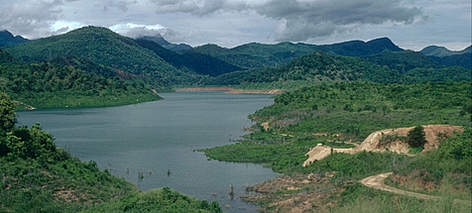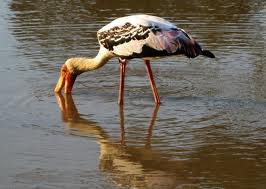 |
Home About Directory Conservation |
What are wetlands?
Inland natural fresh water wetlands
This group includes the 103 river systems, the numerous lakes or wewas, marshes etc.| RIVERINE | PALUSTRINE |
|---|---|
| Deltas | Permanent freshwater marshes |
| Permanent rivers | Seasonal / intermittent marshes |
| Seasonal / intermittent rivers | Peat lands |
| Floodplain / villu wetlands | Shrub dominated marshes |
| Permanent freshwater lakes | Tree dominated marshes |
| Seasonal / intermittent lakes | Springs |
Streams and rivers:
| Sri Lanka has an extensive network of rivers and streams that drains a total of 103 distinct natural river basins. In terms of length, these flowing water bodies cover more than 4500 km. Mahaweli, Walawe and Kelani rivers originate from the central highlands and flow through all three peneplains of the island. The river basins originating in the wet highlands are perennial while many of those in the dry zone are seasonal. The Mahaweli river accounts for the largest basin, covering 16% of the island and thereby has a high socio-economic and ecological value. The streams and rivers that flow through the high and mid altitude areas of the island have resulted in several water fall habitats. |  |
The "Villu" wetlands:
Although there are no large natural lakes in Sri Lanka, there are several flood-plain lakes, commonly referred to as "Villus", which cover a total area of 12500 ha. Often they are cut-off former river bends. Many of the larger "Villus" are located in the Mahaweli floodplain in the East. A typical example is the inter-connected Handapan and Pendiya Villus (796 ha), which is the largest in the entire Mahaweli Villu system.Fresh water Marshes:
| These are shallow inland depressions located mainly in rural areas either connected to a river or receiving water through surface run-off river floodwater and ground water seepage. Partially decomposed organic material in such marshes form peat, characterized by water logged sticky soil. A typical example is the Muthurajawela Marsh which is the largest peat bog in Sri Lanka. |  |
Fresh water Swamp Forest:
| This is a late successional stage of a freshwater marsh ecosystem, comprising of trees that are adapted to grow in shallow stagnant water. Swamp forests are seasonally inundated with river water. It is the rarest wetland type in Sri Lanka and a good example is the Walauwa- Watta Wathurana Swamp Forest (12 ha) located in the Kalu river basin. |  |